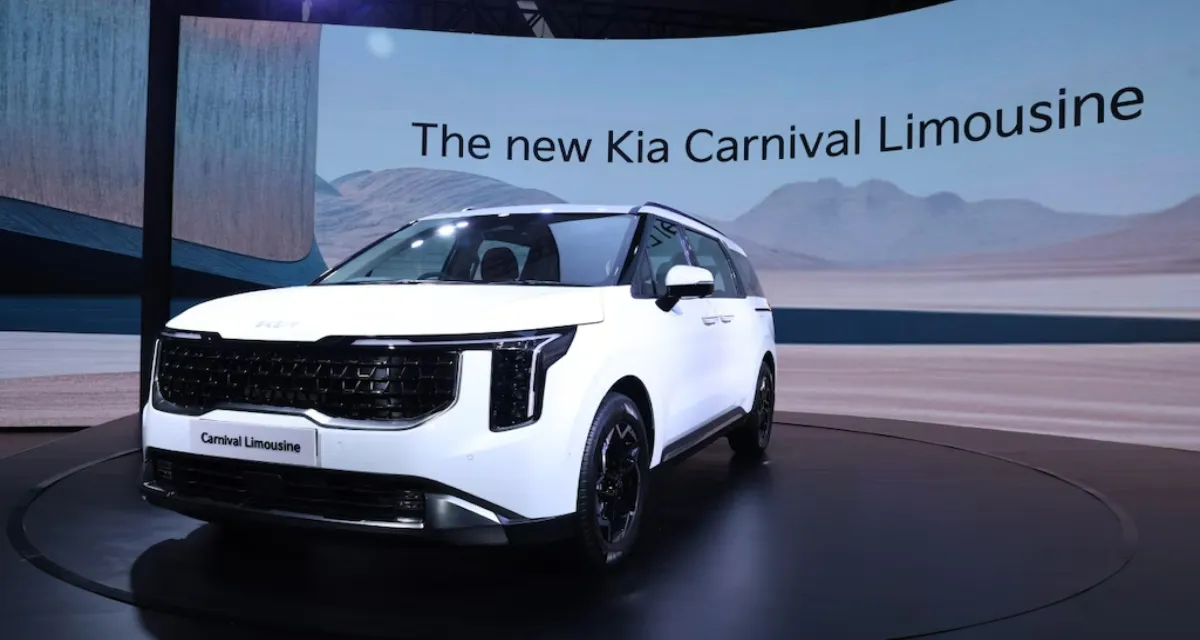

Kia India, one of the most dynamic car brands in India’s automotive market, ended October on a high note, ringing in record sales just in time for Diwali. The car manufacturer reported 28,545 deliveries last month, marking a remarkable 30% growth compared to the same period in 2023. This festive season saw an impressive uptick in demand for Kia vehicles, with the company delivering thousands of cars to eager customers ready to celebrate in style.
The numbers reveal a substantial leap from last October when Kia delivered 21,941 units. According to data from the Vahan portal, over 28,500 customers received their Kia vehicles this October, celebrating the festive season with a luxury drive. This count, which excludes the state of Telangana, underscores Kia’s successful strategy to meet the festive season rush. Notably, the recently launched Kia Carnival Limousine Plus became a popular choice, with 54 units delivered during Diwali, giving families an opulent ride for the festive season.
Kia India’s sales approach this year centered around two key goals: accelerating deliveries and managing inventory efficiently. According to Hardeep Singh Brar, Kia India’s Senior VP and Head of Sales and Marketing, the brand focused on getting cars to customers as quickly as possible while maintaining a balanced inventory with dealers. This meticulous coordination ensured that customers could receive their cars on time, a crucial factor during the festival season when demand peaks. In addition, dealerships benefited from this strategy, experiencing smooth, uninterrupted operations without excess stock piling up.
Kia's approach reflects a strong commitment to creating a customer-centric environment, where timely deliveries and streamlined dealer experiences are the priority. This strategy not only boosts customer satisfaction but also strengthens relationships within Kia’s dealership network, allowing both the brand and its partners to grow.
Kia’s growth isn’t limited to India. The brand’s Anantapur plant in Andhra Pradesh, which started mass production in 2019, has turned India into a major production hub for Kia. In October 2024, the company exported 2,042 vehicles, highlighting its ambition to make Indian-manufactured cars desirable across international markets. Kia’s dedication to quality and innovation has earned it a reputation globally, making it a competitive player in the international market.
The numbers show that Kia’s commitment to delivering high-quality, adaptable vehicles for diverse markets is paying off. This success abroad further solidifies Kia’s market presence and positions the brand for even greater influence on the global automotive stage.
A key part of Kia India’s strategy has been its commitment to innovation and growth, and this year marked a significant step forward with the launch of Kia 2.0. This initiative is about redefining what mobility looks like in the modern world. Under this vision, Kia recently introduced two exciting new models: the Carnival Limousine Plus and the EV9. The Carnival Limousine Plus is crafted for luxury and spaciousness, making it perfect for families and large groups, while the EV9 represents Kia’s commitment to the future of electric mobility.
With these new models, Kia hopes to tap into both ends of the automotive spectrum premium luxury and sustainable electric solutions. The Carnival Limousine Plus adds to Kia’s reputation as a luxury brand in India, while the EV9 shows that Kia is ready to embrace the electric vehicle (EV) trend, meeting the demands of eco-conscious consumers who are eager to drive into the future.
Kia’s journey in India began in 2017 when the company signed an MOU with the Andhra Pradesh state government to set up a manufacturing plant in Anantapur. By August 2019, Kia’s factory was up and running, with an impressive annual production capacity of 300,000 units. This factory became the birthplace of popular models like the Seltos, Sonet, and Carens, along with newer entries like the EV6, which has helped Kia make strides in the connected car market.
Since its inception, Kia India has dispatched over 1.3 million cars from its Anantapur plant, with a majority serving the domestic market. The brand also boasts a wide network with over 640 touchpoints across 287 cities, ensuring that Kia’s presence is felt far and wide.
With its extensive distribution and service network, Kia is committed to growing its footprint and making its mark as a dependable, high-quality car brand that offers something for everyone. This infrastructure positions Kia as a frontrunner in India’s automotive market, constantly innovating and expanding.
At the heart of Kia’s success in India is its customer-first approach. The company’s focus on providing a seamless ownership experience, from purchase to after-sales support, has won over customers across the country. Kia’s model lineup caters to a variety of tastes and needs, from family-oriented SUVs to sleek electric vehicles, which resonates with India’s diverse customer base.
Kia’s brand identity, “Movement that Inspires,” aligns well with its efforts to create vehicles that offer meaningful experiences for consumers. By offering a range of innovative products, Kia is inspiring customers to go beyond traditional choices and explore modern, stylish, and technologically advanced options.
Overall, Kia India’s remarkable October sales figures reflect more than just numbers; they highlight a brand that understands and adapts to its market. The company’s approach, which balances timely delivery, quality control, and innovation, has proven effective, especially during the bustling festive season. As Kia continues to launch new models and redefine its presence under the Kia 2.0 initiative, the brand is setting the stage for continued success, not only in India but globally.
With a solid infrastructure, a strong dealership network, and a customer-focused approach, Kia India is poised to maintain its upward trajectory. As the company rolls out more connected, luxury, and electric vehicles, it’s clear that Kia isn’t just moving with the times — it’s helping shape the future of the automotive industry in India and beyond.
Also Read: